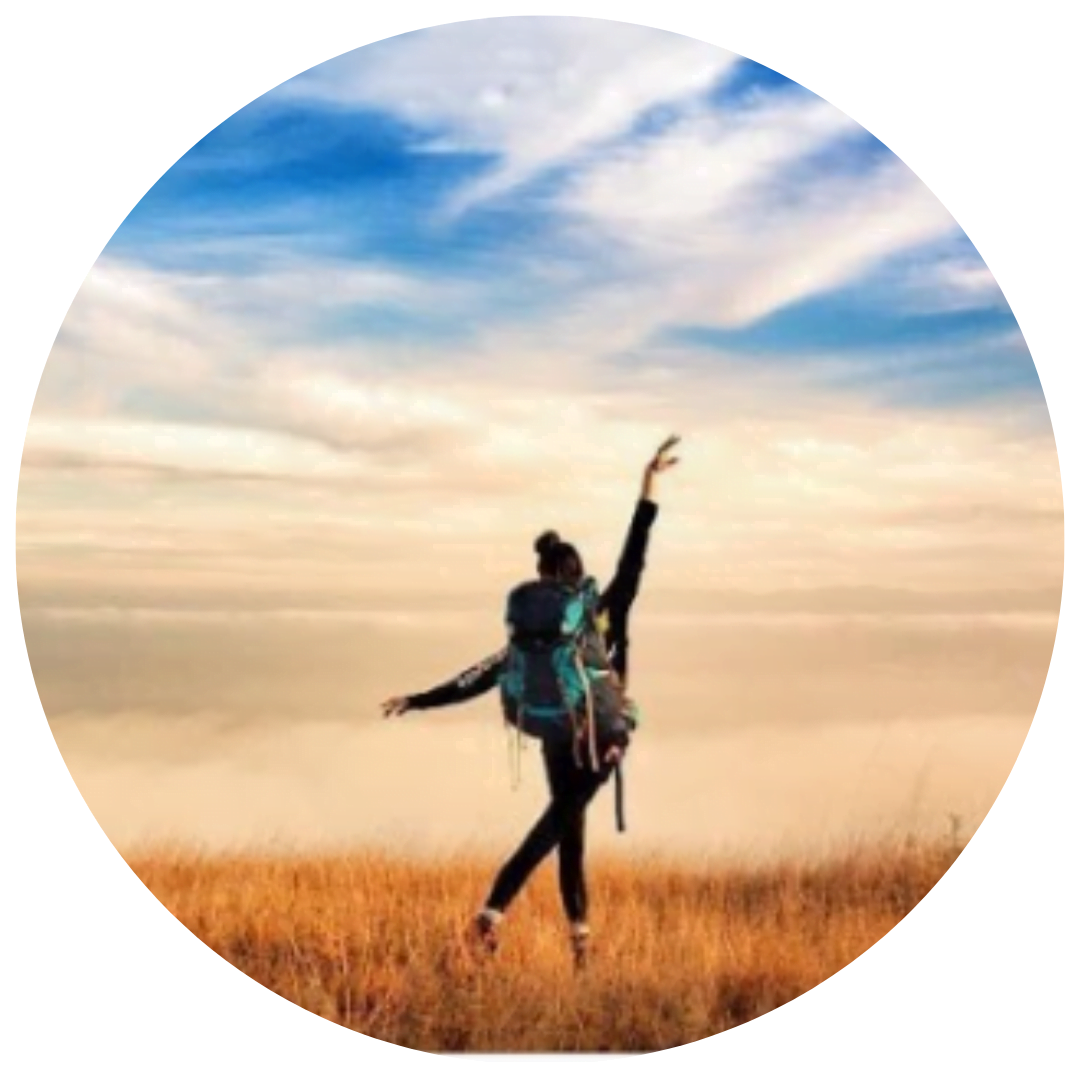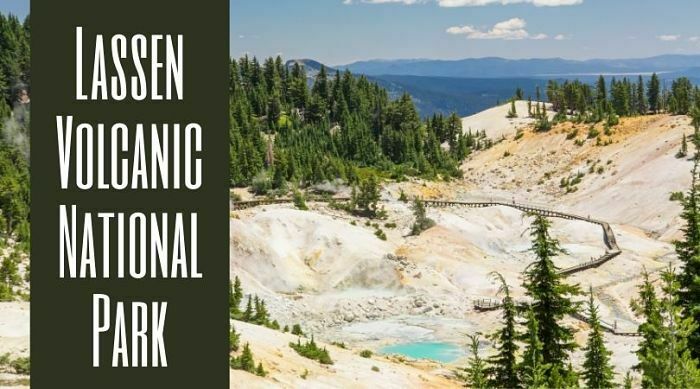Death Valley National Park is an almost straight drive north on the 395 from Orange County. To the west you see the Sierra Peaks with the highest point of the lower 48 states, Mount Whitney, and to the east the lowest point in the United States at the Badwater Basin. Death Valley National Park itself comprises two prominent valleys, Death Valley and Panamint Valley. These valleys are millions of years old and full of geographical wonders, unique plants and wildlife, and loads of history.

Death Valley National Park Details
There is no physical address for Death Valley National Park or the Visitor Center. Visit the website for detailed directions.
Phone: 760-786-3200
Website: https://www.nps.gov/deva/index.htm
Hours: Open 24 Hours Daily
Fees: An Entrance Fee is Required
Death Valley Visitor Guides: https://www.nps.gov/deva/learn/news/newspaper.htm
Death Valley Hiking Maps: https://www.nps.gov/deva/planyourvisit/hiking.htm
See More Of The Best National Parks In California
About Death Valley
Death Valley National Park is notorious for its triple digit, record breaking heat and its miles of sand dunes. But would you believe that Death Valley was once a more mild climate with more lush waters? About 9,000 years ago in 7000 BC the Nevares Spring People followed plentiful large game animals to become the first known inhabitants of the area. The climate however was changing and one thousand years ago, the nomadic Timbisha tribe occupied the area which was hot, barren, and dry.
The California Gold Rush brought the first European settlers in December of 1849. This group of about 100 wagons actually had no intention of traveling into Death Valley but when they got lost looking for a vital turn off they ended up in the area now called “Burnt Wagons Camp” located near Stovepipe Wells. This group had a horrific time. No water, killing their oxen for food and burning the wood of their wagons for survival they eventually abandoned what was left after several weeks to hike out of the valley. Just after leaving, one of the women in the group turned and famously said, “Goodbye Death Valley,” giving the valley they endured its name.
Borax mining was the long term success over mining of gold or silver. And the unique landscape of the valley made it a popular set location for various radio programs, television, book plots, and movies. The 1920s saw a boom in tourism which resulted in various resorts to be built along the sandy wilderness. Death Valley National Monument was declared in 1933 to protect the land with the growth of visitors. Death Valley eventually became a national park in 1994. In 2013, Death Valley National Park was designated as a dark sky park by the International Dark-Sky Association for its expansive star gazing.
What To Do In Death Valley
Death Valley National Park is 93% designated wilderness area. With that much protected land of mountains, valleys, and sand dunes there are so many unique areas to explore! Here are some activities for the whole family.
Hiking
Death Valley National Park has unique trails that take you to wondrous sights just out of this world. Here is a must do list to get the best of what this park has to offer.
- Twenty Mule Team Canyon: The Twenty Mule Team Road is a dirt road that runs about 3 miles through a rainbow palette of rocks. This easy to moderate hike can be as long or short as you like as you go up and over the various hills.
- Badwater Basin: This easy 2 mile hike takes you to one of the lowest points in the world. The ground is white from salt collections as you venture into the dried out basin. It can get very hot here as there is no coverage from the surrounding mountains.
- Golden Canyon Trail to Red Cathedral: This moderate rating 3 mile hike takes you through interesting canyons to the brightly colored red outcroppings of the cathedral.
- Telescope Peak: This difficult 13 mile trek takes you to the highest point in Death Valley. It is quite an experience and actually has snow for part of the year. If you choose to start at the charcoal kilns you can try and avoid a rougher road but be aware it adds another mile there and back on your hike.
Biking Death Valley
Death Valley has more than 785 miles of roads weaving throughout the park. Almost 300 miles of those roads are great for mountain biking. Just keep in mind that bikes are not allowed on closed roads, service roads, off roadways, in the wilderness, or on any trails. Plus riding side by side is extremely dangerous on the narrow roads so stick to follow the leader for the best ride.
- Bicycle Path: Death Valley has a designated bicycle path that runs from Furnace Creek Visitor Center, one mile to Harmony Borax Works and then one mile one-way through Mustard Canyon. This is an easy and short ride, great for everyone.
- 20-Mule Team Canyon Road: This easy 3 mile loop brings you right through one of the most colorful areas of the park.
- Hole-in-the-Wall Road: This secluded moderate ride is about 4 miles on loose gravel. It is located about 6.5 miles east of Furnace Creek on Hwy.190 and a great ride to have all to yourself.
- Racetrack Road: A wonderful ride for serious riders wanting a long and difficult ride. The total is 27 miles that start at the Ubehebe Crater Road. The first 10 miles are washboard but it’s all smooth after that.
Death Valley Sand Dunes
You might be surprised to find out that Death Valley National Park is not simply covered in sand. In fact less than 1% of the park is sand. But those areas are the much beloved sand dunes. Sand dunes are created when a source of sand is moved by prevailing winds to a place for the sand to collect in large mounds. The eroded canyons and washes provide plenty of sand, the wind seems to always blow here but there are only a few areas in the park where the sand is “trapped” by geographic features such as mountains.
- Mesquite Flat Dunes: Definitely the most popular, easiest to access and most photographed sand dunes in the park. Located in central Death Valley near Stovepipe Wells, access is from Hwy. 190. Here you will find that the dune field includes three types of dunes: crescent, linear, and star shaped. Polygon-cracked clay of an ancient lakebed forms the floor. Mesquite trees have created large hummocks that provide stable habitats for wildlife. Sand boarding is permitted on these dunes.
- Ibex Dunes: Located next to Saratoga Springs these dunes are shielded from paved roads by rocky desert hills. To get there simply hike about one mile from the Saratoga Springs Road for access. Sand boarding is prohibited on these dunes.
- Eureka Dunes: Eureka Dunes right off of the Death Valley/Big Pine Road. The road is accessible but from the Ubehebe Crater Road you must travel 44 miles of graded dirt to the dunes. The drive is worth it to reach the highest dunes in the park. Plus the drive often makes them less crowded to explore. Please be aware that sand boarding is prohibited on these dunes.
- Panamint Dunes: To access these sand dunes you will need to drive 5 miles down the unmarked dirt road leading past Lake Hill, then hike cross-country 3 miles. Unlike the other dunes of Death Valley which are all situated on flat valley floors, these dunes are actually perched on a slope. The view from the summit of these dunes reveals their star shape and an impressive view down the valley. Sand boarding is prohibited on these dunes.
- Saline Valley Dunes: Located in a remote valley many visitors have no idea these dunes exist. These low dunes that gently ripple up from the edge of salt flats are quite large. The best part is they are surrounded by Inyo Mountains that tower nearly 10,000 feet above. Sand boarding is permitted on these dunes.
Death Valley Off Roading
Death Valley National Park has more than 350 miles of unpaved and four-wheel-drive roads. These roads provide access to wilderness hiking, camping, and historical sites all throughout the park.
- Harry Wade Road: This not very technical road is 31.5 miles out and back. But because it is not the most difficult it is a great sand and rocky adventure. You can choose to start off highway 127 or Ashford Junction in the Southern part of Death Valley.
- Echo Pass and Inyo Mine Loop: This loop is just over 8 miles in length. This road is both difficult to see from the paved road as well as difficult to navigate without a serious off road vehicle. The rewards are plenty of solitude with cool rock formations as well as a chance to explore the Inyo Mine ghost town.
- Lippincott Mine Road: This is a desolate, adventurous seven mile low range climb. The road runs from Saline Valley to Racetrack Plaza and only for very prepared off road drivers.
Night Gazing
Because of the isolated location of Death Valley National Park the opportunity to see vivid night skies here is incredible. Want to see for yourself?
Where to go:
- Harmony Borax Works: Located close to the Furnace Creek Visitor Center this area is a great place to see the stars with little obstruction from the surrounding mountains. Another bonus is the historic buildings and a mule cart to make a creepy night photograph.
- Mesquite Flat Sand Dunes: Located close to Stovepipe Wells the sand dunes seem to have endless sky. The views are unobstructed, but the downside is the close proximity to the highway.
- Badwater Basin: Located 17 miles south on Badwater Road. Not the place to see the Milky Way because of the neighboring mountains, but seeing the night sky from the salt flats is a unique, other-worldly experience.
Sky gazing how-to:
- Visit the park during the new moon. When the moon is not visible the sky will be darker and you can see more stars.
- Avoid light pollution. Light pollution comes from street lights, cars, and other man made light sources. Try to pick a place to view the night sky away from developed areas. Ubehebe Crater has some of the darkest skies in the park, but the stars can be just as spectacular at Harmony Borax Works.
- Be patient and pack coffee. It takes about 30 minutes for your eyes to adjust to the night sky to see the most stars.
- Use a red light. Don’t have a red light? Simply put a piece of red cellophane on your flashlight. This will minimize the effect of the light on your adjusting eyes.
- Look at the horizon and away from large, towering mountains. If you pick a lower elevation place to view the night sky, like Badwater Basin, some of the stars could be blocked by the mountain ranges.
- Bring binoculars. A simple pair of binoculars can be a great way to get a closer look!
Pro Tips
- Death Valley National Park has the hottest recorded temperatures in the world. Heat stroke and heat exhaustion are very real dangers. The best time of year to visit Death Valley is winter and early spring. And even though summer temperatures average above 100 degrees you can even see the unique experience of snow in the desert in some winter months!
- Unfortunately like most National Parks pets are not allowed in most areas.
- Death Valley National Park charges a fee to enter. Fees are per vehicle or per motorcycle. If you are entering on foot, horse, or bike the fee is per person. You can also purchase a park specific annual pass or an annual park pass for all national parks.
Death Valley National Park is full of surprises. With mountains, salt flats, sand dunes and the most surreal nighttime skyscapes – there is something here for everyone.
Happy adventures!
Find The Best California State Parks
Related Articles
| Big Bear | Sequoia & Kings Canyon |
| Anza Borrego | Guide To Yosemite National Park |
| Sitton Peak Day Hike | Joshua Tree Camping, Hiking, & More |




